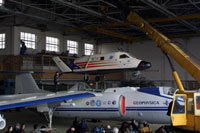Activism
Survey
Finds a Core Group of
Enthusiasts for the Space Program
The Orlando Sentinel commissioned
a poll to investigate the level of public support for the
US space program.
Unfortunately, it found lukewarm
interest in space by most of the public and very little
interest in seeing increased funding for NASA programs like
the ISS: Poll:
Space program generates low enthusiasm in public - OrlandoSentinel
- Mar.10.02
There were nuances, however.
For example, the more educated the person, the higher the
support, especially by those who were informed about space
developments and benefits.
In the article, the space analyst
John Pike says that NASA should concentrate on the core
group of space supporters or "space cadets" who
have the most interest in space.
This definitely follows the
HobbySpace
philosophy. Many space activists dream of somehow replicating
that brief post-Sputnik period of the late 1950's to the
early 1960's when support for the space program was overwhelming
among the general public.
This will never happen again
short of a major dramatic event such as a comet found to
be approaching earth or contact with aliens.
The article reports in a disappointed
tone that "only 9 percent" of the respondents
say that NASA funding should increase. If accurate, however,
it represents about 30 million Americans who have a strong
interest in space.
That's plenty of people with
which to build markets for space businesses such as space
tourism (see above).
While I generally think NASA's
current budget is sufficient to accomplish great things
if properly leveraged with private companies, it should
be noted that often budgets and policies do not strictly
follow public poll percentages.
The influence of groups like
farmers and AIDs activists on the government is much larger
than would be indicated strictly by their percentages of
the population.
The relentless intensity with
which they pursue their causes is the biggest factor and
space activists should follow their example. However, their
success also indicates that there is a minimum number of
at least one or two million people needed to have an impact.
The total number of space activists
in the NSS, Planetary Society, Mars Society, and other activist
groups adds up to about 150,000 at most . The first priority
of these groups should be to grow and reach the critical
mass needed to make a difference.
I think this growth is only
possible, though, if people are given compelling reasons
to become involved with space. And the only way to do that
is for these groups to concentrate on the kinds of hobbies
and activities that people can get deeply involved in, i.e.
the kind that HobbySpace
describes here.





